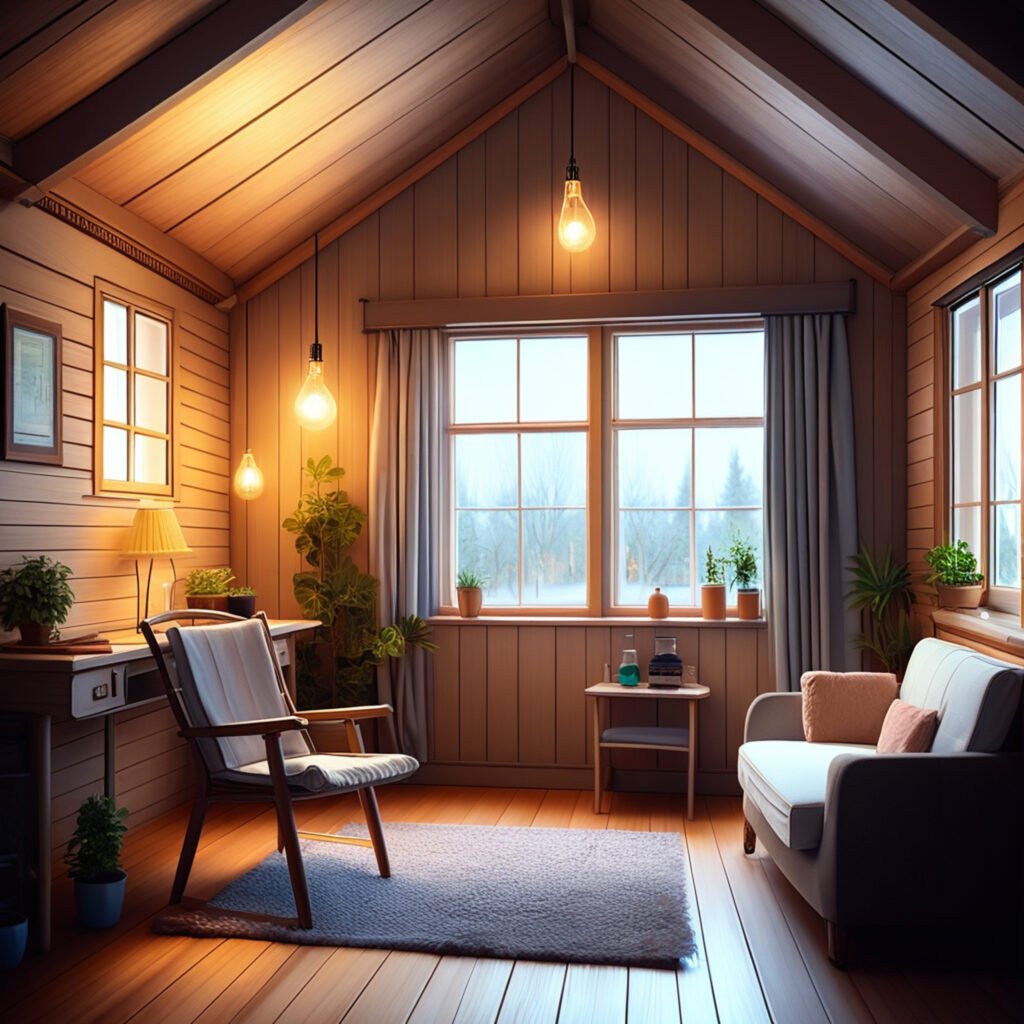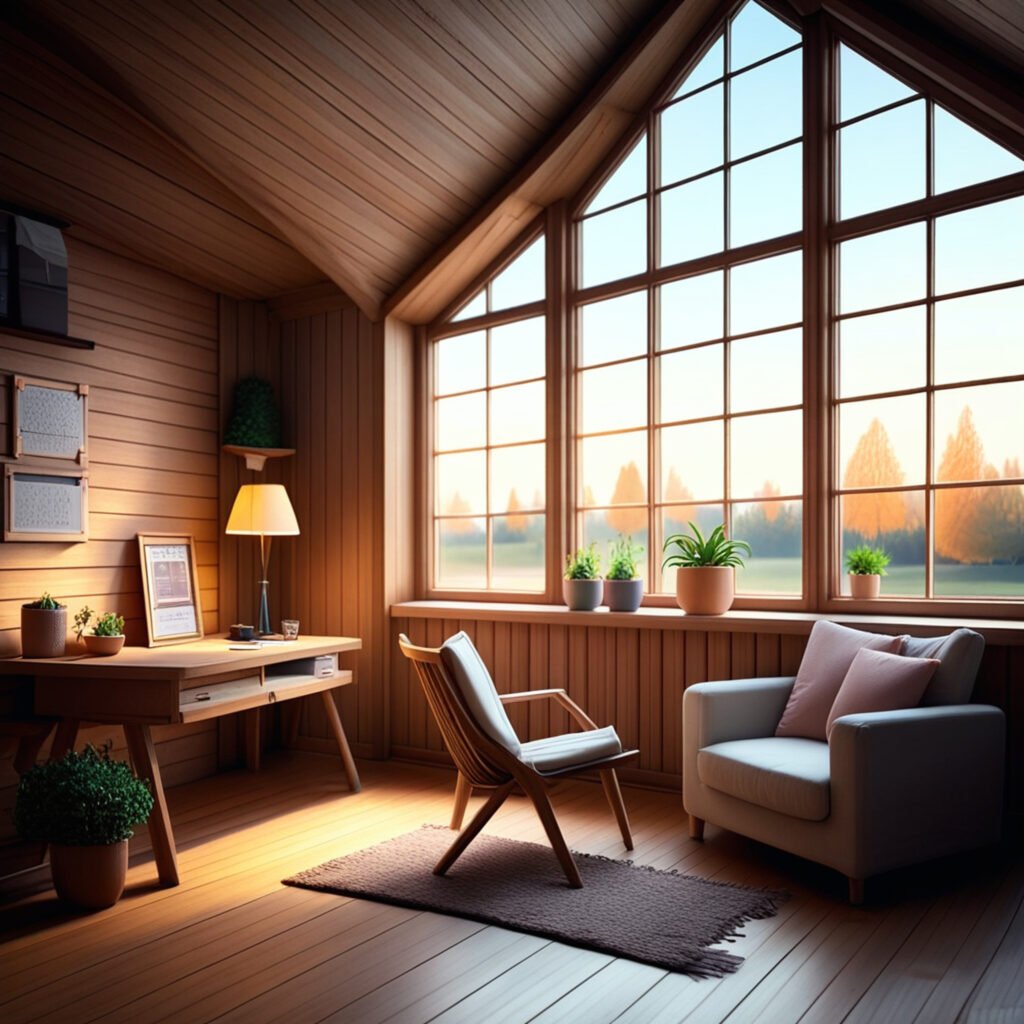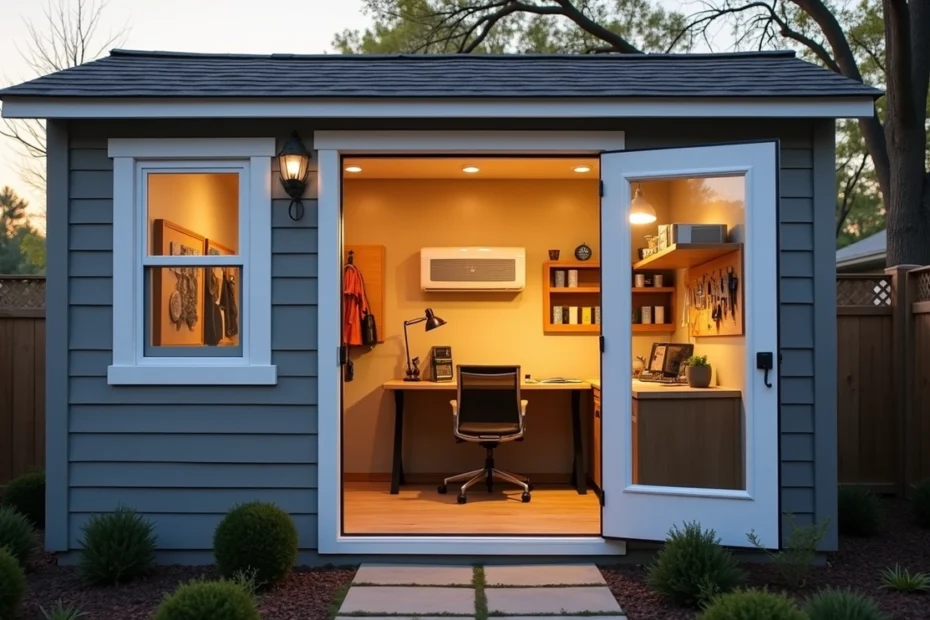The process of turning a basic storage shed into a year-round functional space needs proper planning and execution. My team and I found that good insulation and electrical work are the foundations of creating a usable space that works in every season. We thought over our options carefully and installed two large fluorescent lights with daylight bulbs on the ceiling. Everything was wired into a 70-amp circuit breaker box.
Your shed needs proper weatherproofing and insulation to stay comfortable throughout the year. This piece will help you reshape the scene with ideas that maximize functionality. You’ll learn about typical conversion costs, practical floor plans, and creative ideas for small spaces. A shed can become your perfect home office, art studio, or personal retreat. Let me walk you through each step to create a well-insulated space that stays cozy in winter and cool in summer.
Evaluating Your Shed’s Potential
A full picture of your existing structure will save you time, money, and prevent problems before you start your shed conversion project. Your shed’s potential depends on several vital factors that need careful thought.
Check structural integrity and layout
Start by looking at the foundation, walls, and roof for signs. Search for foundation cracks, rotting wood, or water damage that could weaken the structure. The roof needs special attention – fix any leaks right away before starting the conversion.
Layout plays a big role, too. Door placement, window locations, and ceiling height determine what you can do with the space. Higher ceilings give you more design options, and multiple windows provide natural light and better air flow.
Measure space and think about shed conversion floor plans
Precise measurements help you plan your new space better. Create a detailed floor plan with exact dimensions of length, width, and height. Don’t forget diagonal measurements since older sheds rarely have perfect right angles.
Multi-functional furniture and vertical storage solutions work great for small shed conversions. A shed that’s 8×10 feet or bigger usually has enough room for a comfortable home office or craft room. Smaller spaces make better reading nooks or storage areas with limited seating.
Identify existing utilities and access points
Look at whether your shed has power or sits close to existing power lines. New electrical lines affect your conversion costs a lot and need professional installation to meet safety codes.
Water and sewage access matter if you want a bathroom or kitchenette. Most people start with extension cords, but proper wiring makes the space comfortable year-round.
Your shed’s location matters too. You need a clear path from your house. Steps, a ramp, or a walkway might be necessary. Check local building codes and homeowners association rules first – you may need permits based on your planned changes.
Planning for Year-Round Comfort

A comfortable year-round space is the lifeblood of any successful shed conversion. The right insulation and climate control can transform an occasional-use structure into a functional extension of your home.
Choosing the right insulation for walls and ceilings
Insulation is the foundation for temperature control in your shed conversion. Your walls need an R-value between R-13 and R-23, based on your climate and stud size. The ceiling needs stronger insulation, with R-values from R-30 to R-49 to handle rising heat.
DIY enthusiasts often pick fiberglass batts as an affordable option, but these can irritate skin and need careful handling. Closed-cell spray foam delivers better performance with excellent thermal resistance and moisture protection. This choice adds strength to walls and roof panels while giving you one of the highest R-values.
A vapor barrier must go on the hot side of your insulation to stop condensation problems. Warmer climates need it on the exterior, while colder regions work better with interior installation.
Climate control options: heaters, fans, and AC units
Mini-split systems are the best choice for shed conversions. These ductless units link an outdoor compressor to an indoor air handler and provide heating and cooling without connecting to your home’s central system. They work great even in -15°F temperatures and let you control different zones independently.
If you’re on a budget, electric space heaters quickly warm smaller spaces, and oil-filled radiators give steady heat longer. Just make sure to pick heaters with tip-over protection and keep them away from anything that could catch fire.
Summer heat calls for portable fans that give quick relief, though small window AC units cool more effectively. Humid areas might need a dehumidifier to stop mold and protect your electronics.
Weatherproofing doors, windows, and flooring
Look for gaps around windows, doors, and utility outlets where outside air sneaks in. Weather stripping and door sweeps help cut down drafts. Double-paned windows are worth thinking over as an upgrade that insulates better.
Sunny winter days are perfect to open doors and windows and get fresh air moving through the space. Air vents or a mechanical ventilator help maintain good airflow all year.
Wood exteriors need yearly treatment with quality preservatives on dry days. The quickest way to improve your floor’s comfort and protection is to build a false floor using insulation board topped with plywood.
Installing Power and Lighting

A functional shed conversion needs proper electrical installation as its foundation to power lights, tools, and climate control systems.
Understanding the shed conversion cost for electrical work
You need to think over the financial aspects of adding electricity to your shed. Running power lines underground costs $10 to $25 per linear foot. The average project spans 50 to 150 feet and requires an investment between $500 and $3,800. The complete project with interior wiring typically runs from $1,200 to $7,100.
Your project’s distance from the power source drives the cost significantly. Each 50-foot extension adds about $750 to your budget. Workshop or office conversions might need a subpanel, which adds $500 to $1,700 to your costs.
Wiring basics and safety considerations
Safety codes require specific burial depths for underground wiring. Rigid metal conduit needs just 6 inches of soil cover, while underground feeder cable requires 12 inches. The building codes mandate a disconnect switch that’s available near the wire entry point of all outbuildings.
Outdoor settings face moisture issues, so all outlets must have GFCI protection. This feature cuts power instantly if it detects ground faults and prevents shocks effectively. A grounding rod adds complete protection to your shed and costs between $100 and $400.
Lighting types: ambient, task, and accent
The best lighting plans combine three different types. Ambient lights serve as the main illumination source and create a welcoming space with warm light between 2700K and 3000K. Ceiling fixtures and wall sconces work great here.
Task lighting targets specific work areas with brighter, cooler light (3500K-4500K). LED strips, desk lamps, and under-cabinet fixtures give you focused light that’s perfect for reading, crafting, or workshop tasks.
Accent lighting isn’t a match for the other types, but adds character to your conversion. Track lights and wall-mounted fixtures draw attention to specific areas and add depth to your space.
Interior Design and Functionality
Your shed conversion takes shape after the framework is 10 years old. The interior design reshapes the scene from a simple structure into a customized retreat that matches your needs.
Small shed conversion ideas for maximizing space
Smart use of every inch makes small shed conversions work. Railroad flat layouts (rooms connected in a straight line) create larger individual spaces. Loft areas serve as perfect sleeping quarters. Your space becomes more useful with multi-functional furniture. Storage ottomans, extendable tables, and daybeds that turn into guest beds save floor space without losing style.
Smart storage: shelves, pegboards, and bins
The right storage keeps things organized and easy to reach. Here’s what works best:
- Wall-mounted shelves that adjust in height as your needs change
- Pegboards with hooks that show all your tools
- Clear plastic bins that let you see what’s inside quickly
- Overhead racks that free up your floor space for seasonal items
Furniture layout for productivity and comfort
Put your desk by the window to get natural light. Small spaces work well with fold-down desks or wall-mounted work surfaces that tuck away after use. You need a good ergonomic chair for those long work sessions.
Decor and personalization tips
Make the space yours with personal touches – hang family photos, lay down area rugs, or put inspiring quotes on a bulletin board. Plants add life and clean the air. Mirrors and light colors make your space look bigger.
Conclusion
Your backyard shed can become a functional year-round space with careful planning and attention to detail. This piece explores everything in successful shed conversions, from structural evaluation to the final touches.
Good insulation is the foundation of comfort in your converted space. On top of that, climate control systems like mini-splits provide year-round temperature regulation, and proper weatherproofing stops drafts and moisture problems. Electrical installations might get pricey, but they power your lighting, equipment, and climate systems.
Smart interior design makes a huge difference, especially in smaller conversions. Multi-functional furniture, strategic storage, and proper furniture placement help maximize both functionality and comfort in tight spaces. Your personal touches through décor create a space that feels uniquely yours.
Local building codes might need permits before you start the conversion. All the same, the effort is worth it once you step into your newly reshaped space. You can create a home office, art studio, or personal retreat, and your shed conversion becomes a valuable extension of your living space. A well-executed shed conversion balances practicality with personal enjoyment—creating a cozy year-round space you’ll love for years to come.
